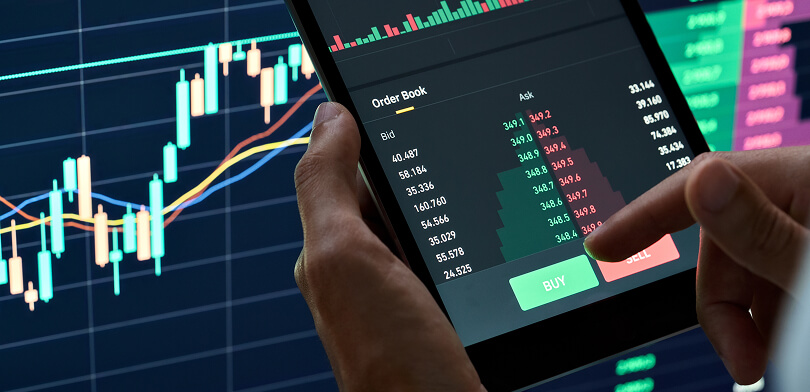With time, derivatives have become popular because they provide investors with a wider range of investment opportunities and enable them to manage risk more effectively. This post will explore the features of the derivatives market, including its purpose, types of instruments, participants, and key characteristics.
- What is a Derivatives Market?
- Features of the Derivatives Market
- Types of Derivatives
- Advantages and Disadvantages of Derivatives Market
- Conclusion
Topics Covered :
What is a Derivatives Market?
The derivatives market is a financial market that trades financial instruments known as derivatives. These instruments derive value from an underlying asset such as stocks, bonds, commodities, or currencies. One key feature of a derivatives market is the ability to speculate on the future price movements of the underlying asset without actually owning the asset itself.
This allows investors to take advantage of potential price fluctuations and manage risk by hedging their positions. Another important feature is the leverage offered by derivatives, which allows investors to gain exposure to a larger position with a smaller initial investment.
Additionally, derivatives markets provide liquidity and price discovery, as they offer a platform for buyers and sellers to trade these instruments transparently and regulated.
Features of the Derivatives Market
The derivatives market is a complex yet vital component of the global financial landscape, offering a variety of mechanisms for risk management, speculation, and arbitrage.
Understanding its features is essential for both seasoned traders and newcomers looking to open a Demat account and engage in trading activities. Here, we delve into the distinctive features that make it a unique and powerful tool in financial markets.
One of the primary features of the derivatives market is its ability to provide leverage. Leverage allows participants to gain significant exposure to market movements without committing a large amount of capital upfront.
This is facilitated through products like futures and options, where a small margin deposit can control much of the underlying asset. While leverage can magnify profits, it also increases the potential for substantial losses, making it a double-edged sword that requires careful management.
Another key derivative market feature is the ability to hedge against risks. Hedging is taking an offsetting position in a derivative to balance any potential losses in an investment or an underlying asset.
This is particularly useful for businesses that need to manage risks related to fluctuations in commodity prices, interest rates, or exchange rates. For example, an airline company might use fuel futures to hedge against the risk of rising jet fuel prices, thereby stabilising its future costs.
The derivatives market also supports price discovery, which refers to determining the fair market price for an asset through trading activity. Derivatives like futures and options contracts help reveal information about future expectations concerning the price of an asset, which contributes to more transparent and efficient markets.
The derivatives market provides leverage, hedging, and price discovery and also offers arbitrage opportunities. Arbitrage involves buying and selling an asset or equivalent asset in different markets to profit from price discrepancies.
This is possible because derivatives can be structured in various ways to exploit inefficiencies in pricing across different markets without incurring significant risk.
Derivative market features also include high liquidity in some segments, such as major currency pairs, interest rate derivatives, and index derivatives. High liquidity ensures that large positions can be opened and closed without causing significant price movements, which is advantageous for large institutional traders.
For individuals looking to participate in these markets, it is advisable to open a demat account. A Demat account will enable them to trade derivatives electronically, which is essential for participating in modern financial markets.
This account provides a secure and efficient way to hold financial securities in electronic form, greatly facilitating trading on the derivatives market.
Types of Derivatives
There is a wide range of derivatives available in the market. One common type is futures contracts, which allow investors to buy or sell an asset at a predetermined price and date in the future. Commodity producers and consumers often use these contracts to hedge against price fluctuations.
Another type is options, which give the holder the right, but not the obligation, to buy or sell an asset at a specified price within a certain timeframe. Options can be used for speculation, hedging, or income generation through covered calls.
Additionally, swaps are another important category of derivatives involving the exchange of cash flows between parties based on predetermined terms. Swaps are commonly used to manage interest rates or currency risk.
These are just a few examples of the types of derivatives available in the market, each serving a specific purpose and offering unique opportunities for investors to participate in the derivatives market features.
Advantages and Disadvantages of Derivatives Market
The features of the derivatives market offer several advantages and disadvantages for investors.
| Advantages of Derivatives Market | Disadvantages of Derivatives Market |
| Hedging Risk: Derivatives allow companies and investors to hedge against price fluctuations in their underlying assets, effectively managing risk. | Complexity: Derivatives can be complex and difficult to understand, which may lead to mismanagement or misuse of these financial instruments. |
| Price Discovery: These markets help in determining the future price of an asset, providing valuable insights that assist in planning and strategy formulation. | Market Risk: Derivatives are prone to high volatility and can expose investors to significant market risks, especially in unstable economic conditions. |
| Access to Unavailable Markets or Assets: Derivatives provide opportunities to trade in assets or markets that are otherwise inaccessible, opening up new investment possibilities. | Counterparty Risk: There is always a risk that the other party in a derivatives contract might default, leading to potential financial losses. |
| Leverage: Investors can control large amounts of assets with a relatively small investment, amplifying potential profits. | Regulatory Risk: Derivatives markets can face uncertain regulatory environments which can alter the risk and reward profiles unexpectedly. |
| Arbitrage Opportunities: They provide opportunities to exploit price differentials between markets, leading to potential profits. | Systemic Risk: The interconnected nature of derivatives can lead to systemic risks, potentially affecting the broader financial system during crises. |
So, while derivatives offer opportunities for risk management and potential returns, investors should approach them cautiously and ensure they understand their features and associated risks.
Conclusion
The derivatives market offers a wide range of complex financial instruments that cater to the varying needs of investors and businesses. From hedging against market risks to speculating on future prices, derivatives provide opportunities for strategic risk management and potential financial gains.
Recommended Read: Demat Account Definition
However, individuals and organisations must thoroughly understand derivatives’ features and potential risks before entering into transactions. With proper knowledge and careful consideration, the derivatives market can be valuable in achieving financial goals.











